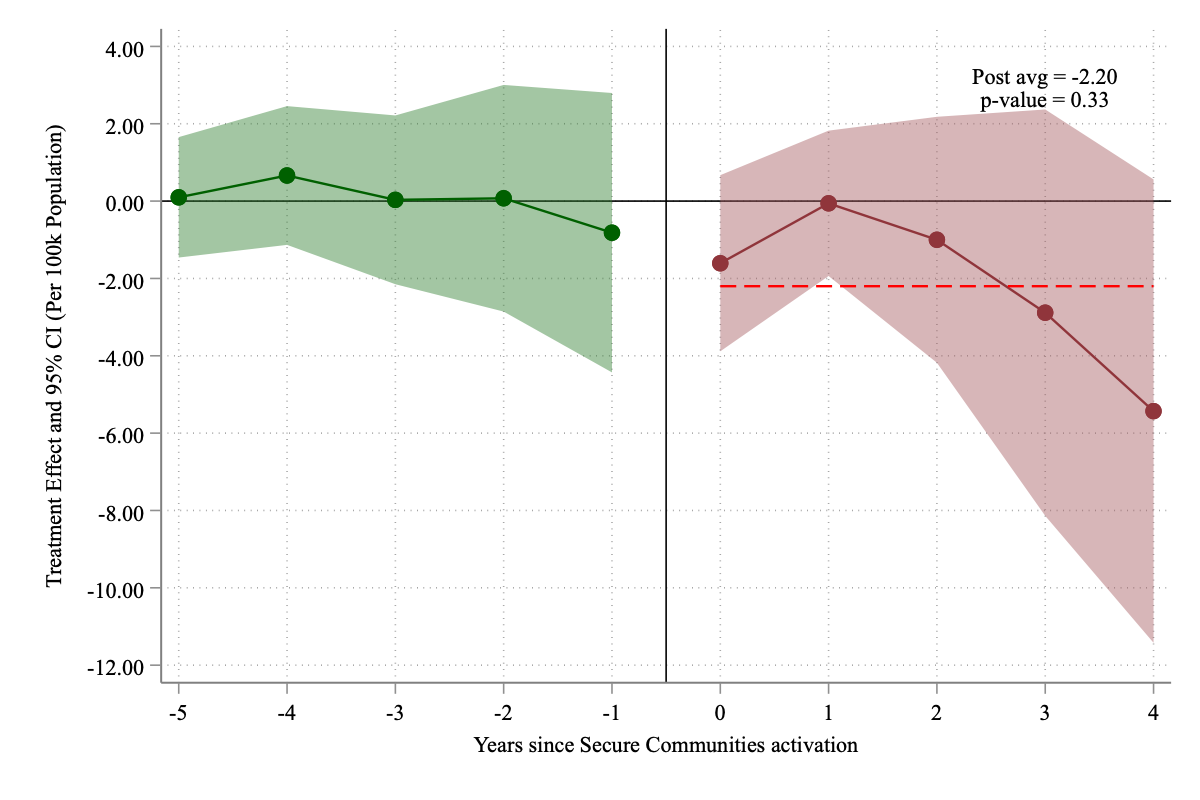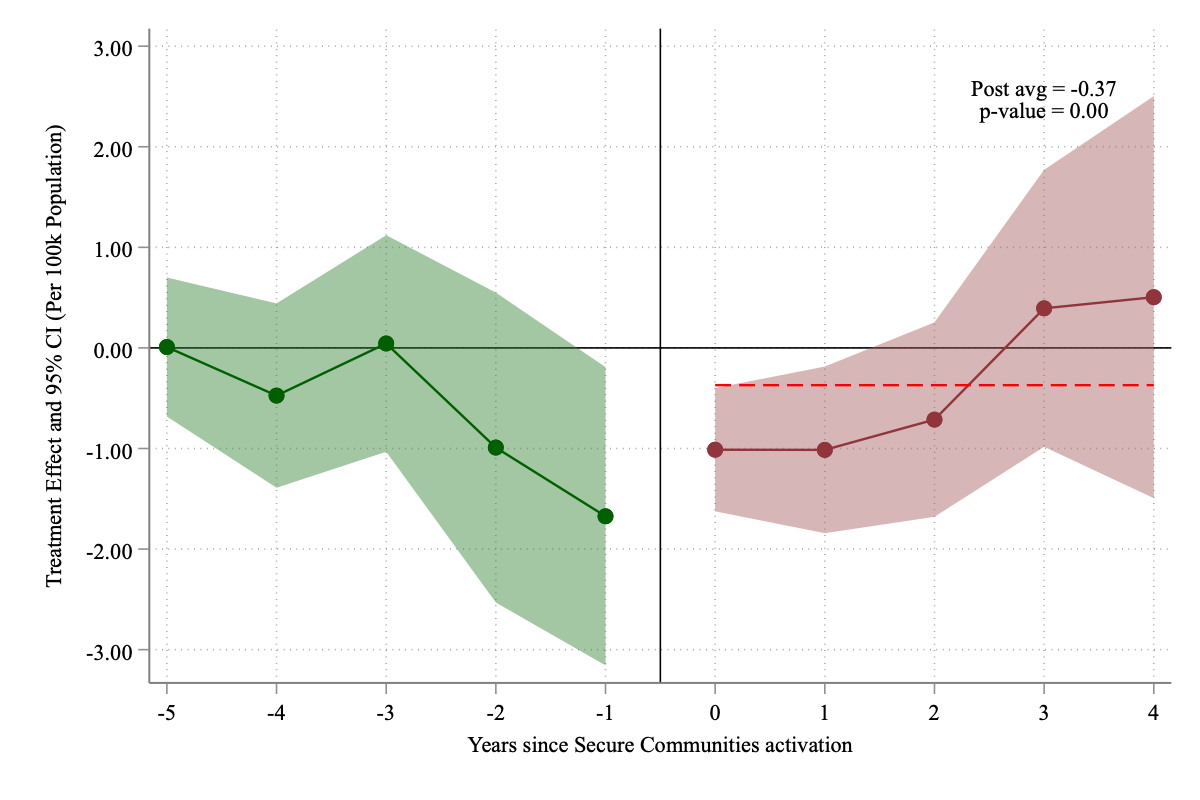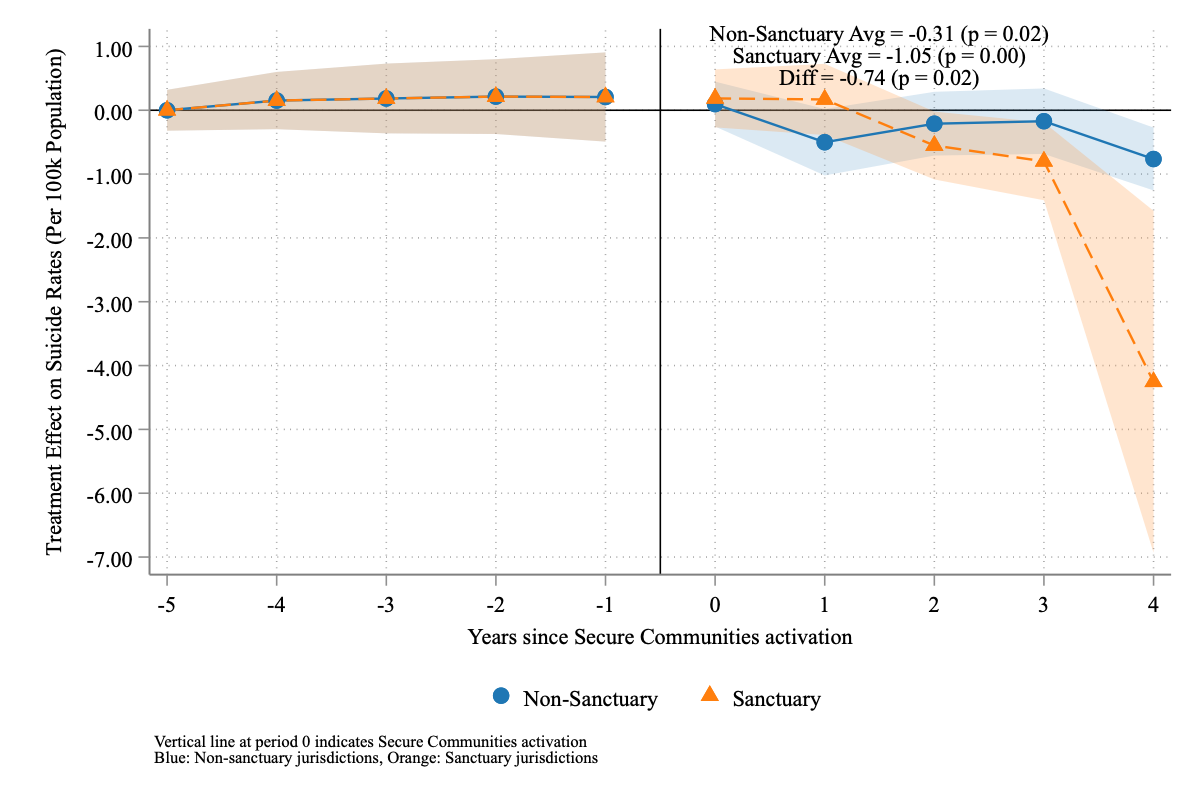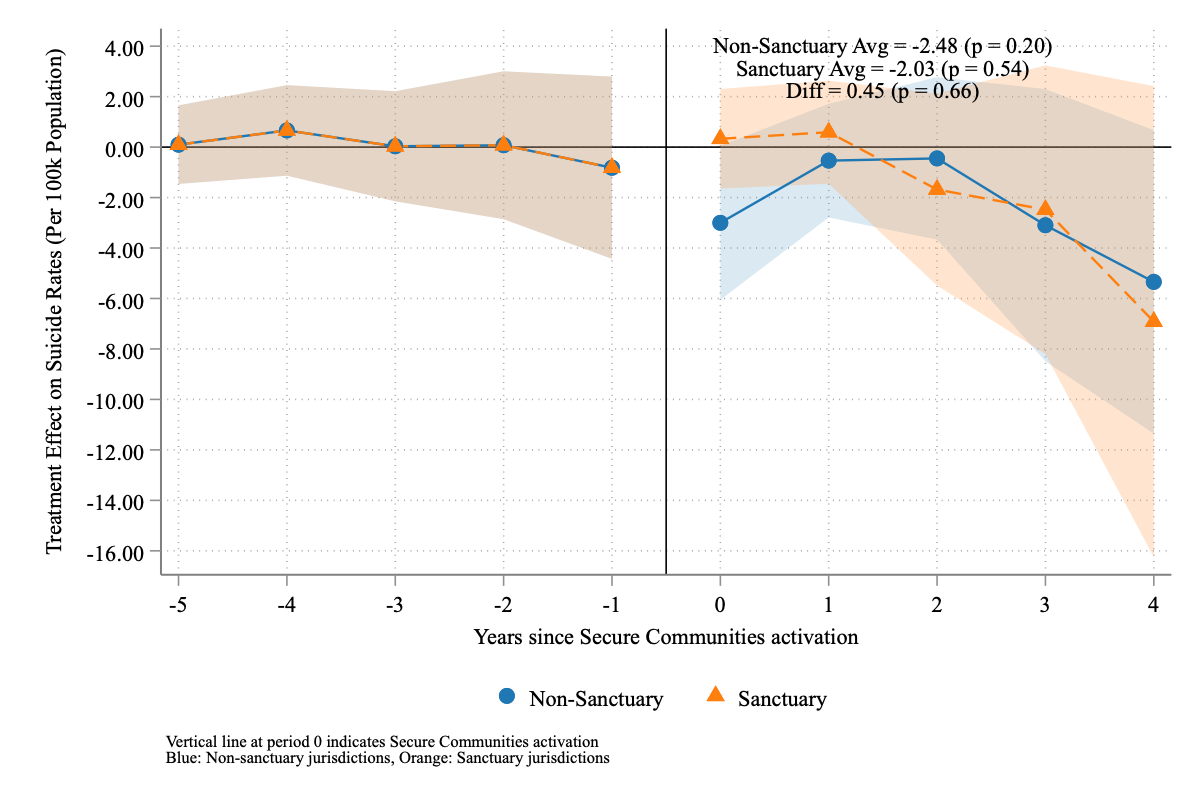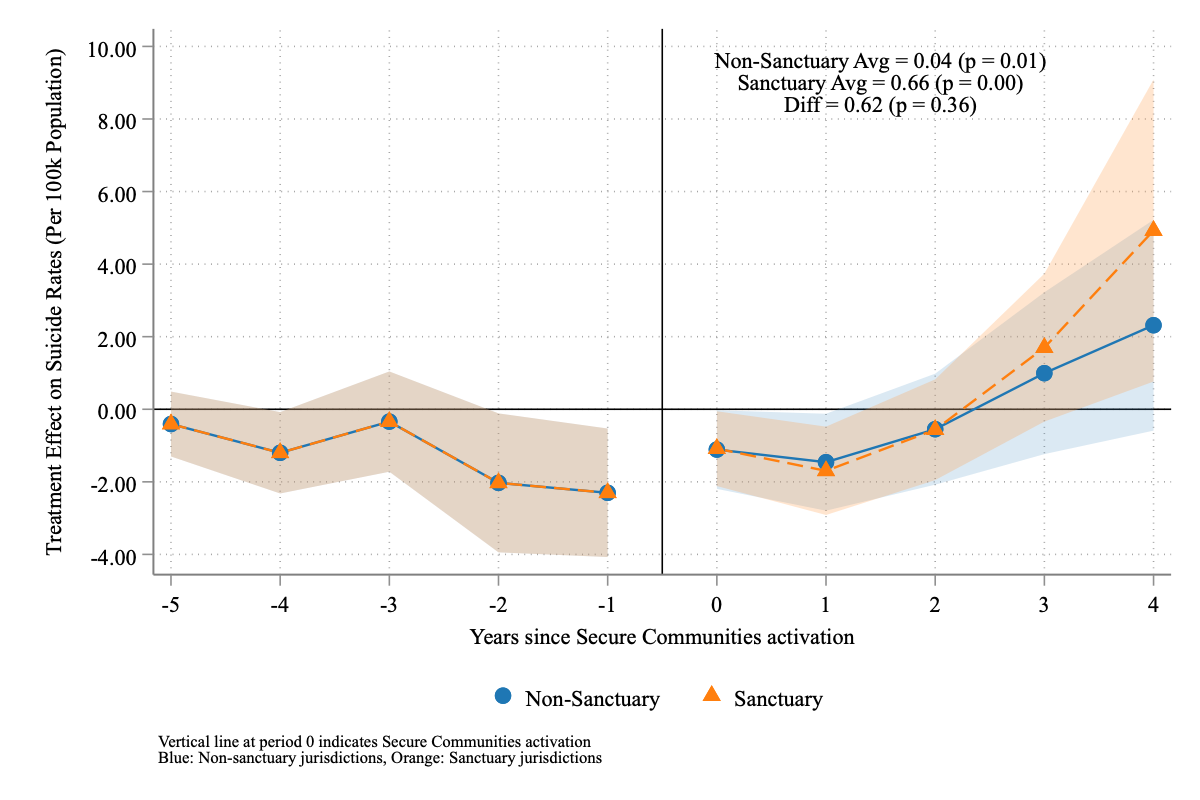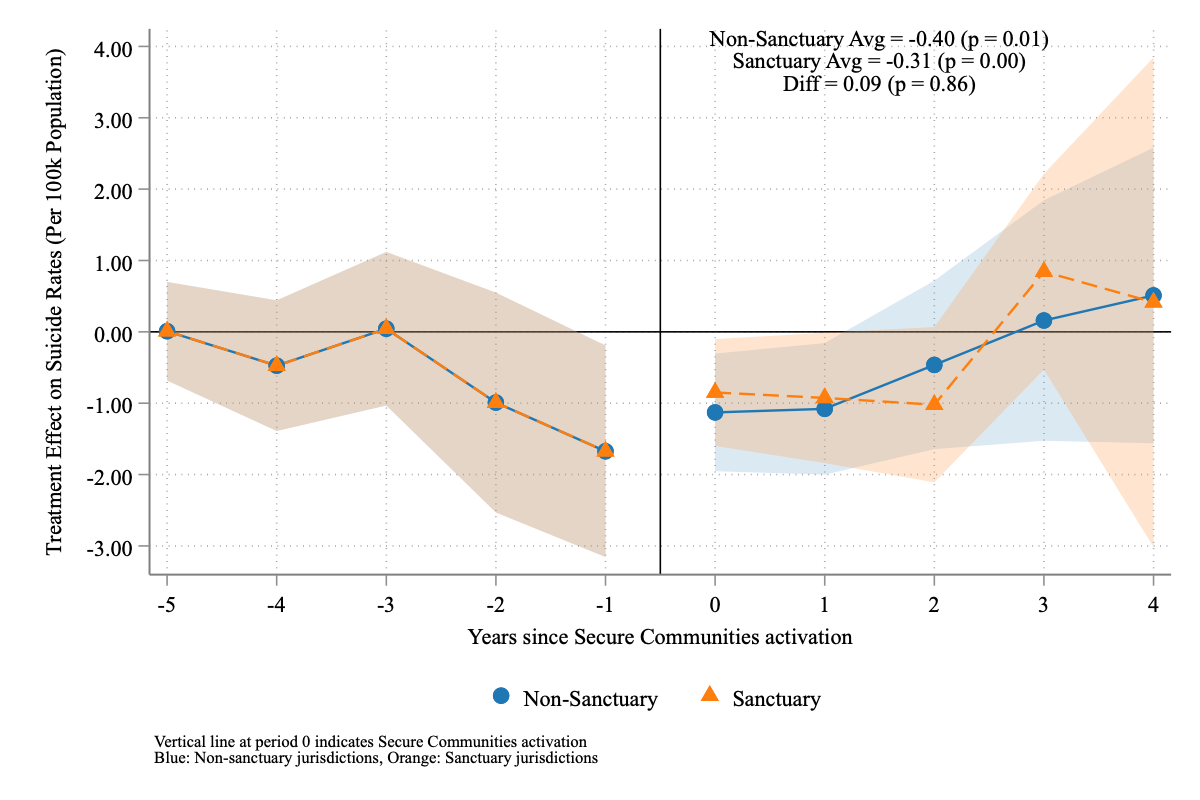Important links
I estimate the causal impact of the US Secure Communities (SC) program—which greatly expanded deportation risk nationwide—on suicide rates among Hispanic populations. Exploiting SC’s staggered county-level rollout between 2008 and 2013, I use the triple difference-in-differences (DDD) estimator proposed by Borusyak, Jaravel, and Spiess (2024) to identify causal effects. The DDD comparisons between Hispanic and non-Hispanic Whites reveal striking heterogeneity across age groups: Hispanic children aged 5-14 experience decreases of 0.35-1 suicides per 100,000 (35-100% relative decreases), and adolescents aged 15-24 show reductions of 2.2 suicides per 100,000, while Hispanic adults aged 34+ suffer increases of 0.5-2.6 suicides per 100,000 in years 2-4 post-implementation. Local contexts significantly moderate these effects: counties with stronger economic conditions show more protective effects, while Democratic-leaning counties experience larger increases in adult suicide rates. Sanctuary counties provide enhanced protection for youth (reductions of 4.25 vs 0.76 suicides per 100,000 for children) but simultaneously show greater adverse effects for adults (increases of 4.93 vs 2.32 suicides per 100,000) compared to non-sanctuary counties. Because Hispanic ethnicity is often underreported in mortality data, these estimates likely understate the true effects. Overall, the evidence suggests that immigration enforcement produces complex mental health impacts fundamentally shaped by age, gender, and local economic and political environments.
Important Figures



